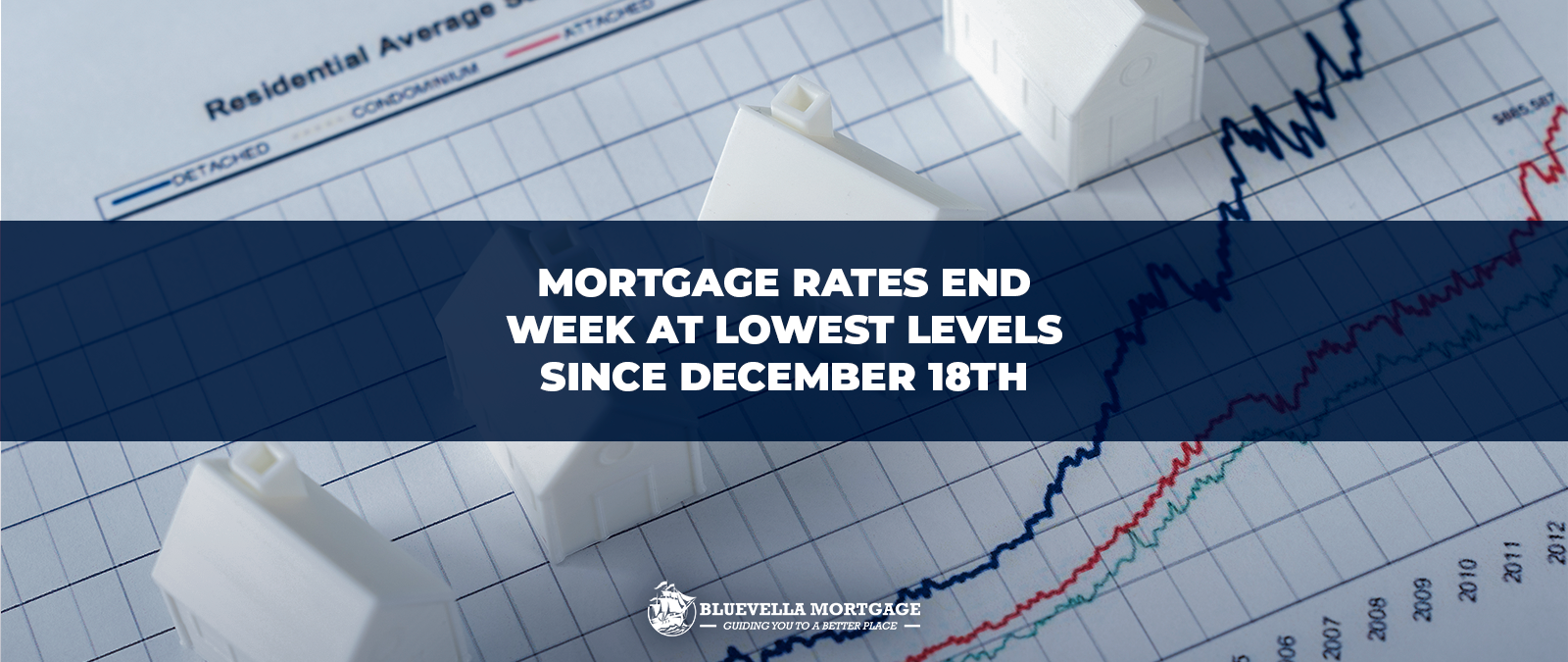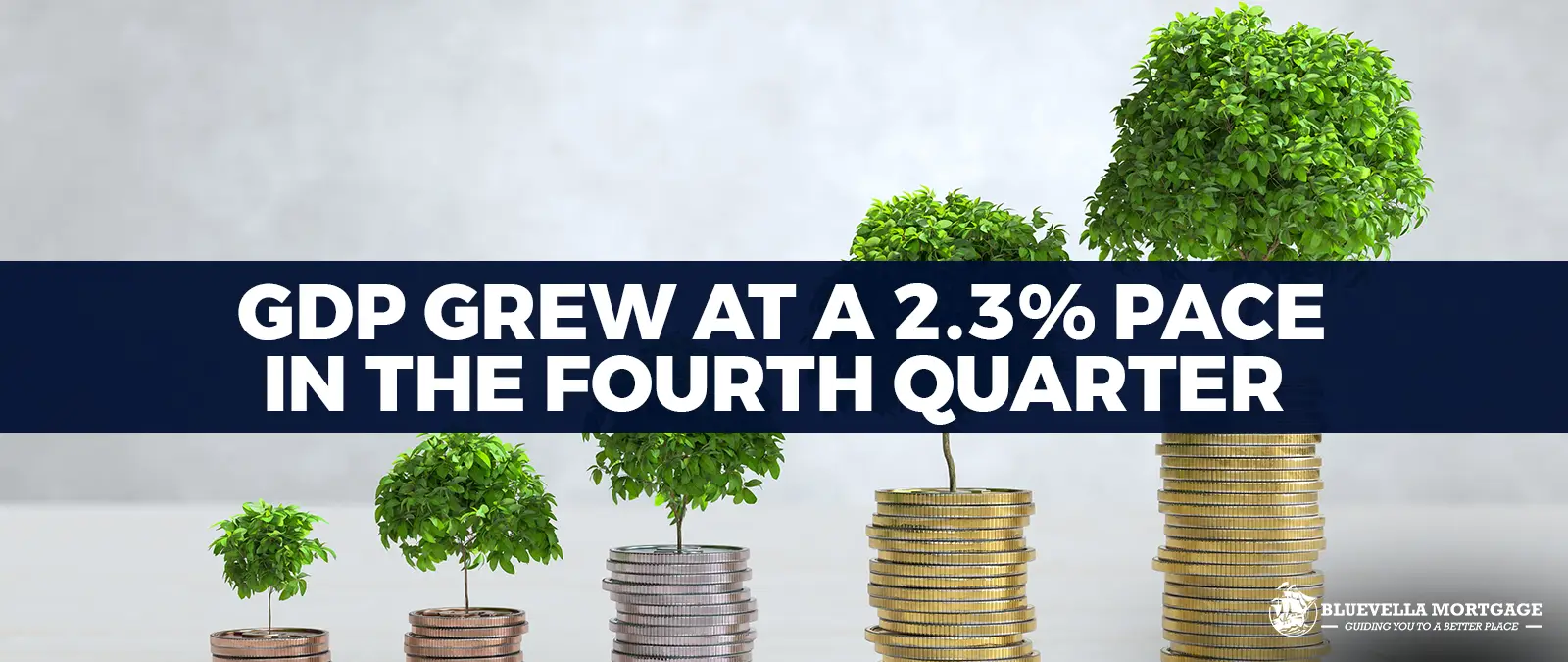Introduction to Mortgage Demand Trends
The housing market often serves as a barometer for the overall economic climate, with mortgage demand reflecting the prevailing conditions and sentiments among potential homebuyers. In recent weeks, an observable surge in mortgage applications—recorded at a striking 20% increase in just one week—has captured the attention of industry analysts and financial observers alike. Understanding the nuances of this trend necessitates a deeper exploration of the factors that contribute to such fluctuations in mortgage demand.
One of the principal drivers influencing mortgage applications is the state of interest rates. Historically low interest rates encourage prospective buyers to secure financing, thus boosting demand for mortgages. With central banks around the world adapting their monetary policies in response to economic indicators, borrowers are increasingly seeking favorable conditions to buy homes. As interest rates decrease or remain stable, the affordability of mortgages rises, prompting a surge in applications.
Furthermore, economic conditions—including employment rates, consumer confidence, and wage growth—play a crucial role in shaping buyer psychology. When economic indicators are positive and the job market remains robust, homebuyers are more willing to make significant financial commitments, such as purchasing a home. Conversely, uncertainties or downturns in these areas can dampen demand, demonstrating the cyclical nature of the mortgage market.
Additionally, shifts in buyer behavior and preferences can also impact mortgage demand trends. The increased emphasis on remote work opportunities has reshaped the desires of many buyers, leading them to seek properties in different regions or more spacious accommodations. This evolving psychology influences the decisiveness with which individuals approach home purchasing and ultimately impacts the level of mortgage demand observed.
Also read: Understanding the Decline in Mortgage Applications: A Cautious Borrower Landscape
The Impact of Interest Rates on Mortgage Demand
Interest rates play a crucial role in shaping mortgage demand, as they directly influence the affordability of homes for potential buyers. When interest rates are low, borrowing becomes more accessible, thus encouraging more individuals to seek out mortgage loans. Conversely, when rates rise, prospective homeowners may be dissuaded from entering the market due to higher monthly payments and overall borrowing costs.
In recent weeks, fluctuations in interest rates have been observed, contributing to the notable 20% surge in mortgage applications. Many consumers are keen to take advantage of current interest rates before any potential hikes occur. Fixed-rate mortgages remain popular during these times, as they provide borrowers with the certainty of a stable interest rate throughout the loan’s lifetime, thereby aiding in long-term financial planning.
On the other hand, adjustable-rate mortgages (ARMs) have also gained traction among certain demographics who are comfortable with the inherent risk of interest rate shifts in exchange for lower initial rates. As the market conditions change, potential borrowers are weighing the pros and cons of both fixed and adjustable-rate options. While fixed rates offer stability, ARMs might seem appealing for those planning to refinance or sell before their rates begin to adjust. This diversification in mortgage product choices reflects consumers’ varying risk tolerance levels in an environment marked by uncertainty.
Ultimately, as interest rates fluctuate, the dynamics of mortgage demand are likely to shift as well. Homebuyers must carefully assess their financial situations and objectives before committing to a mortgage product. Understanding these relationships will illuminate why recent rates have prompted a surge in applications and will continue to influence the housing market in the future.
Economic Conditions Driving Home Purchases
The recent surge in mortgage demand, marked by a notable 20% increase within just one week, can largely be attributed to several economic conditions influencing home purchasing decisions. Among these, employment rates play a crucial role. As job opportunities rise and unemployment rates decrease, potential homebuyers find themselves in a more secure financial position, prompting them to consider purchasing properties. A stable job market assures individuals of their ability to meet monthly mortgage obligations, which in turn drives housing demand.
In addition to employment levels, wages have seen an upward trend, further enhancing consumers’ purchasing power. With rising incomes, potential buyers are able to afford larger mortgages, making it feasible to invest in homes that align with their aspirations. This financial empowerment also boosts confidence in the economy, leading to an increase in consumer spending, particularly in the housing sector. When individuals feel that their financial footing is stable, they are more inclined to take the significant step of buying a home.
Furthermore, consumer confidence stands as another vital economic indicator that impacts mortgage demand. High levels of confidence often correlate with increased optimism about future economic conditions. Homebuyers are more likely to engage in property purchases when they believe that market conditions will remain favorable in the long term. Government policies also play a substantial role in shaping the home buying landscape. Incentives such as tax credits, lowered interest rates, and favorable lending practices can positively influence potential buyers’ decisions, enabling more individuals to secure mortgages and pursue homeownership.
Overall, these economic conditions—employment rates, wages, consumer confidence, and supportive government policies—collectively foster an environment conducive to increased mortgage demand and home purchases. As these factors continue to evolve, the housing market will likely reflect the sentiments of existing and prospective homeowners.
Demographic Shifts Influencing Mortgage Applications
The landscape of mortgage applications has seen notable transformations, largely driven by demographic shifts within the population. As housing affordability remains a pressing concern, understanding the characteristics of current homebuyers is essential. Notably, younger buyers, particularly those in the millennial and Generation Z categories, are entering the housing market in greater numbers. These individuals, often in their late twenties to early thirties, are increasingly prioritizing homeownership as a long-term investment, thereby fueling the recent surge in mortgage demand. Their collective desire for independence and stability drives them towards homeownership, contrasting with the previous generation’s tendency to rent longer.
In addition to age, income levels play a pivotal role in shaping mortgage applications. Recent data indicates that many potential homebuyers are individuals with moderate to high incomes, seeking homes that align with their financial capabilities. This growing group is focused on homes that not only serve their immediate needs but also serve as investment opportunities. Moreover, government incentives and low-interest rates appeal to this cohort, leading to an increase in applications for mortgages. As potential buyers become more educated regarding financial options, they are emboldened to pursue homeownership more aggressively.
Geographical trends are also influential in the current mortgage landscape. Urban areas, often associated with higher job prospects and lifestyles, are witnessing a profound increase in demand for housing. People are relocating from suburban or rural environments to cities, in search of employment opportunities and a vibrant community life. This movement not only intensifies competition for urban housing but also contributes to a notable uptick in mortgage applications across various metropolitan regions. Overall, these demographic shifts—characterized by age, income, and location—are essential factors driving the heightened demand for mortgages in today’s market.
The Role of Refinancing in Increased Demand
The recent surge in demand, marked by a significant 20% increase in just one week, can be largely attributed to the growing trend of refinancing among homeowners. Refinancing refers to the process of replacing an existing mortgage with a new loan, often to achieve better terms or take advantage of favorable market conditions. In this era of fluctuating interest rates, many homeowners are seeking to capitalize on lower rates to reduce their monthly payments. This proactive approach not only benefits individual borrowers but also contributes to a notable rise in overall applications.
One of the primary motivations behind refinancing is the desire to lower mortgage rates. When interest rates decline, it creates a prime opportunity for homeowners to re-evaluate their current loan conditions. A lower interest rate can result in substantial savings over the life of the loan, making refinancing an attractive option. Additionally, many people are looking to shorten their loan term to pay off their mortgage more quickly, which can lead to significant interest savings in the long term. This trend aligns with the observed spike in mortgage demand, as more individuals explore their refinancing options.
Moreover, the changing economic climate and evolving housing market dynamics also play a crucial role in refinancing trends. Homeowners may find themselves in a situation where they want to access their home equity for various reasons, such as funding renovations or consolidating debt. By refinancing, they can obtain cash-out loans that allow them to leverage their home’s value. This increasing inclination to refinance resonates clearly with the spike in mortgage applications, showcasing the intricate relationship between refinancing activities and overall mortgage demand.
As the market continues to evolve, understanding the implications of refinancing is essential for homeowners and potential buyers alike. Embracing refinancing options can significantly impact financial decisions, ultimately driving up mortgage demand in the process.
Market Reactions to Increased Mortgage Demand
The recent surge in mortgage demand, reported at an impressive 20% increase within just a week, has triggered significant reactions from various stakeholders in the real estate market. Lenders are finding themselves in a challenging yet opportunistic position as they seek to navigate this spike in demand. Many lenders are ramping up their marketing efforts to attract potential borrowers, while also assessing their capacity to process a higher volume of mortgage applications. This demand surge may lead to tighter lending standards in some cases, as lenders want to ensure they can manage the associated risks effectively.
Real estate agents are also adapting to this change. With increased mortgage availability, they expect a boost in housing transactions. Agents are likely revitalizing their outreach strategies, promoting both new listings and existing properties. The anticipation is that with more buyers able to secure financing, properties that have lingered on the market will see renewed interest. As agents work closely with lenders, they may receive updated information on financing options, enabling them to offer clients tailored advice based on the current landscape.
Investors, on the other hand, view this surge in mortgage demand as a signal of a more robust housing market. Many are adjusting their strategies to capitalize on the increased activity, whether through purchasing investment properties or repositioning their existing portfolios. The influx of buyers can lead to upward pressure on home prices, prompting investors to act decisively. Furthermore, the implications for the housing market as a whole are quite significant. With more buyers entering the market, we can expect to see increased competition, which could lead to a quicker pace of sales and a potential decrease in inventory levels. Overall, the current uptick in mortgage demand is influencing the behavior and strategies of various players within the real estate sector, setting the stage for dynamic shifts in the market landscape.
Expert Insights: What Do Industry Leaders Say?
The recent surge in mortgage demand, marked by a staggering 20% increase in just one week, has prompted a wave of commentary from industry leaders. Economists and mortgage brokers are closely monitoring this trend as they unpack the underlying factors contributing to this unexpected rise. One prominent economist noted that falling interest rates have catalyzed this surge. “As interest rates drop, borrowing becomes more attractive to potential homebuyers,” they stated, highlighting the role of economic conditions in shaping consumer behavior in the housing market.
Moreover, mortgage brokers are observing a simultaneous increase in consumer confidence. A well-respected broker emphasized the correlation between broader economic indicators and the housing market. “We are seeing more clients this week who feel secure in their financial situations, which encourages them to pursue homeownership,” they remarked. This sentiment reflects a broader trend toward stabilization in the economy, which is crucial for fostering a robust housing market.
Experts also caution that while the current spike in demand is promising, it may present challenges in terms of housing supply. A leading market analyst pointed out that the inventory of homes for sale has not kept pace with the demand, potentially driving prices upward. “If sellers do not re-enter the market soon, we could see an inflationary effect on home prices,” they warned. This perspective suggests that while consumer interest can propel the market forward, structural barriers related to inventory could temper growth.
In sum, the insights provided by these industry leaders underscore the complexities of the current mortgage landscape. The interplay of lower rates, consumer confidence, and housing supply emerges as a central theme as professionals navigate through these dynamic market conditions. As we assess the future of the housing market, these expert opinions will be invaluable in guiding both buyers and sellers in their decisions.
Potential Challenges Ahead
The recent surge in mortgage demand, exemplified by a notable 20% increase in just one week, brings with it a host of potential challenges that could impact the housing market. One of the primary concerns is market saturation. As more buyers enter the market in search of homeownership, the available inventory may not be sufficient to meet this heightened demand. This imbalance can lead to increased competition among buyers, driving prices higher and potentially exacerbating issues for first-time homebuyers who may already be facing affordability constraints.
Another significant challenge stemming from increased mortgage demand is the escalation of home prices. When demand outstrips supply, sellers are often inclined to raise their asking prices. This situation can create a vicious cycle where prospective buyers are forced to stretch their financial limits to secure a property, pushing affordability even further out of reach. As prices climb, the risk of a housing bubble emerges, raising concerns about market stability and long-term sustainability.
Furthermore, inventory shortages represent a critical hurdle as more individuals and families seek to secure mortgages. A limited supply of homes for sale can lead to bidding wars, thereby inflating home prices even more. Additionally, construction delays and labor shortages can further exacerbate inventory issues, making it difficult for builders to keep pace with demand. These challenges necessitate a careful assessment of market dynamics and a proactive approach by stakeholders in the real estate and mortgage sectors.
In summary, while the surge in mortgage demand signals a robust interest in homeownership, it is essential for potential buyers, sellers, and industry professionals to remain cognizant of the obstacles that accompany such rapid growth. Addressing these challenges will be crucial in fostering a balanced and healthy housing market moving forward.
Conclusion: What the Future Holds for Mortgage Demand
The recent surge in mortgage demand, marked by a remarkable 20% increase within just one week, underscores the dynamic nature of the housing market. Various factors contribute to this upward trajectory, including shifts in interest rates and changing consumer behavior. Historically, fluctuations in mortgage demand can often signify changing economic conditions, making timely analysis essential for both potential homebuyers and investors.
Analyzing the trends in mortgage applications provides insights into homebuyer confidence and overall economic health. If the current trends continue, we may witness an ongoing rise in mortgage requests, which could contribute to further increases in housing prices. Investors monitoring these market movements should pay close attention to interest rate adjustments, as they play a pivotal role in influencing buyer affordability and access to financing.
Moreover, technology and innovation in the mortgage industry have made significant strides, offering more streamlined processes for securing loans. Such advancements can enhance accessibility, thereby broadening the consumer base interested in homeownership. It is crucial for potential buyers to stay informed about these developments, as they could offer opportunities to secure favorable mortgage terms.
As the landscape evolves, remaining knowledgeable about market trends is imperative. With the seasonal nature of real estate, coupled with economic indicators, new mortgage demand patterns will likely emerge. Keeping abreast of these changes will equip prospective buyers and investors with vital information, enabling them to make well-informed decisions. The landscape of mortgage demand is complex and ever-changing, and vigilance in monitoring these trends will ultimately dictate future success in the housing market.
Read more here: Weekly mortgage demand jumped 20% last week, as tariff volatility briefly tanked rates






